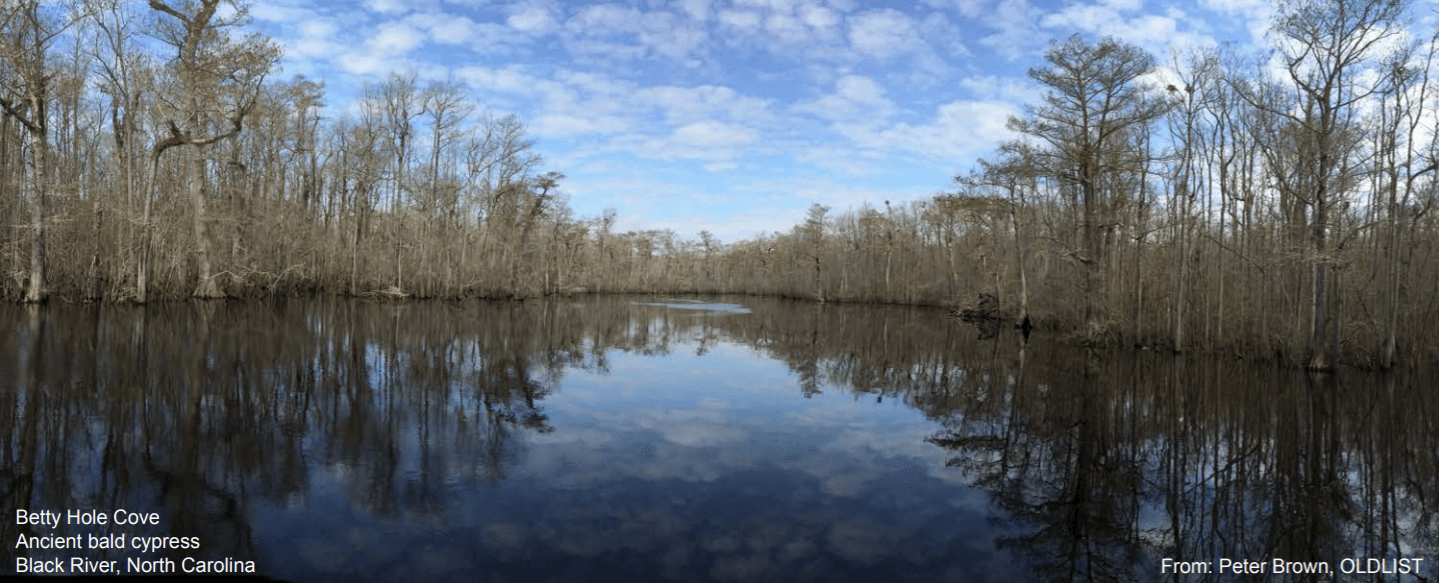How Saving Some of the Southeast’s Oldest Trees Might Help Scientists Monitor Climate Change
Sid Perkins, Science Writer, PNAS
“In the swampy floodplains of North Carolina’s Black River stand ancient trees with a story to tell. Many of these bald cypress (Taxodium distichum) were well over a millennium old when Columbus discovered the Western Hemisphere. As it turns out, their locale has greatly promoted their longevity: by being relatively inaccessible, the trees have been spared from loggers’ saws. But the inexorable sprawl of humans is threatening to breach their mucky moats and disrupt habitats for these trees, many of which have stood for hundreds of years.
The true value of these small patches of largely undisturbed forest may not lie in their wood, however. It may stem from what scientists can glean about how such ecosystems respond to ongoing and future climate change. A few thousand acres of such cypress-studded wetlands are now protected along the lower reaches of the Black River. But researchers are mobilizing to build a consortium that will locate, map, and raise money to purchase hundreds of additional acres of these majestic old trees.”
Click here to read the full article.
